

Sesquicentennial Sampler, 48 48, by Barbara Brackman, Lawrence, Kansas; machine quilted by Lori Kukuk, 2011
I stitched 12 12 blocks, using patterns drafted especially for this book. I chose the bright palette typical of appliqu quilts during the Civil War years, one not often used for reproduction samplers. With 3-wide finished strips and 3 3 cornerstones, nine blocks make a cheerful baby quilt.
Introduction

Circle of Friends, 84 94, coordinated and set by Becky Brown, Montpelier, Virginia; machine quilted by Deb Jacobs, 2011
Blog readers around the world made blocks for this quilt, a gift for Barbara Brackman in appreciation of the history lessons and quilt patterns that she posted each week throughout 2011 on her blog about Civil War quilts. Quilters became a circle of friends as they enjoyed the history, stitched their blocks, and shared them online through the Flickr group that Dustin Cecil created for the readers. Blocks arrived from Australia, Canada, France, Germany, Malaysia, the Netherlands, Portugal, and the United States.
The 7 8 format of 56 blocks includes some duplicates and several that are not included in the blog or the book. The sashing, with cornerstones, finishes to 2 wide, as does the inner tan border. The mitered outer border finishes to 4 wide (blue stripe and brown), cut from a large striped fabric, a good finish to a Civil Warera reproduction quilt.
I was born to bloga skill I did not realize until recently. Throughout 2011, the 150th anniversary of the Civil Wars commencement, I featured a weekly pattern to commemorate the sesquicentennial. I posted instructions for a traditional block with a short story about the war from a first-person account. I hoped a few readers might find it every Saturday morning and enjoy the womens perspective on history. A few might actually sew the blocks.
Within a few weeks, I had 100,000 hits. Apparently there was an audience for Civil War blocks and womens history.
By the end of the year, more than 1,000 people around the world had followed the blog, and many steadfast stitchers had made all the blocks. It was wonderful to hear from people in places such as Finland and South Africa, and to learn that a woman in Kuala Lumpur, Malaysia, was changing her market day from Saturday to Sunday so that she could log on to the blog. I found additional tasks: I tried to give a short answer to a woman in Germany who wondered why so much Northern/Southern sectionalism remains and to explain to several readers (brand new quilters, I bet) the difference between an 8 8 finished block and the 8 8 block they wound up with. I enjoyed helping friends mail swatches to each other across the oceans. I learned how to print a page from the Internet and explained it to someone in Brazil. And maybe the best gift of all was a surprise friendship quilt made by readers worldwide.

Dorsetspinner often posted her finished block pictured with one of her antique sewing machines, here a Wheeler & Wilson treadle.

Patchie13 in France thought that 8 8 blocks were too big, so she redrafted the patterns to 2 2 square. We were all delighted every week to see her tiny blocks contrasted with her thimble. (Note: No instructions are given for 2 2 blocks!)
I had help. Becky Brown stitched all the blocks and checked the directions a few weeks before I posted them. Dustin Cecil volunteered to manage a Flickr picture-sharing group where people could post their photos. (Becky and Dustin conspired with readers on the surprise quilt.) And I had help from new friends who posted their blocks every weekmany of their online photos are in this book.
I chose the blocks in the book for their symbolic names. Most of them were published in the 1930s in the newspaper columns of the Chicago Tribune and the Kansas City Star, long after the war was over. Few of the blocks actually date from as long ago as 150 years, but I used the symbolism in the names to recall the wars events and the words of the witnesses. Add your own meaning with symbolic color, pictorial fabrics, and inked inscriptions, as many blog readers did.
The blog featured 8 8 blocks with a suggestion to make a quilt with all of them. For the book Ive made some changes, adding instructions for 12 12 blocks. I didnt include patterns here that Id offered in other Civil War books, and I substituted a few new stories and patterns to round out the 50. The blocks are renumbered here, and they are grouped for ease of stitching.
Enjoy the book. I hope you have as much fun reading it as I did writing that blog and realizing how worldwide the Web actually is.
1 Four-Patches
The first thirteen blocks are all four-patches based on squares and trianglesgood beginner blocks. The last two block patterns in this chapter are a little harder, but by then you should be able to make them. Some of the pattern pieces are interchangeable within the finished block size. Decide whether you want to make finished 8 8 squares or 12 12 squares, and follow these cutting instructions for the pieces in each block.
NOTE: The following pattern summary is used only in Chapter 1 as a tool for ease of constructing the blocks. Use your favorite method to make half-square triangle units and quarter-square triangle units, or cut out the triangles first and then stitch them together.
8 8 Blocks
A: Cut squares 2 2.

B: Cut squares 2 2
2 . Cut each in half diagonally, creating 2 triangles.
. Cut each in half diagonally, creating 2 triangles.

C: Cut squares 4 4
4 . Cut each in half diagonally, creating 2 triangles.
. Cut each in half diagonally, creating 2 triangles.

D: Cut squares 5 5. Cut each in half diagonally twice, creating 4 triangles.

Next page
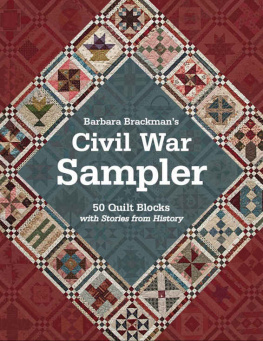
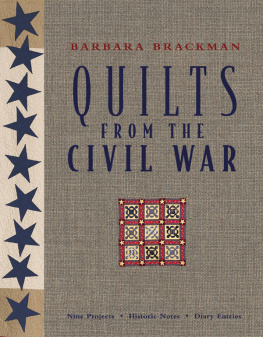
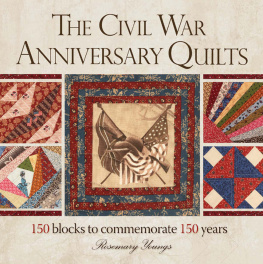
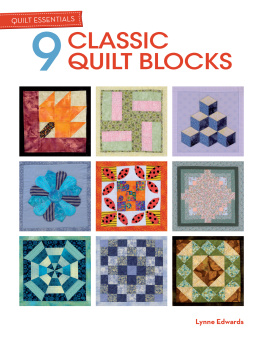
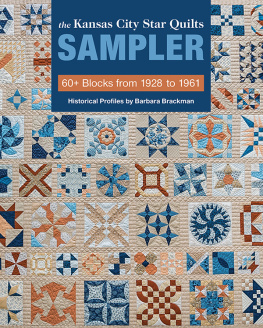
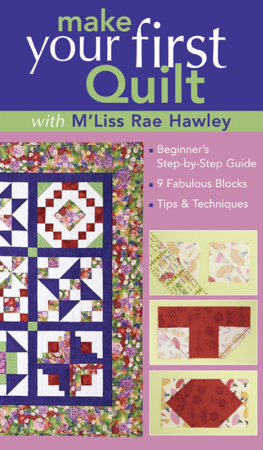



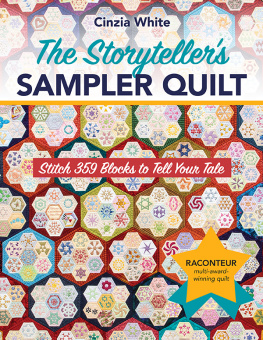
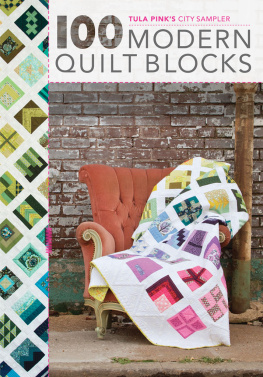







 2
2

